Prophylactic abdominal drainage for pancreatic surgery
- PMID: 34921395
- PMCID: PMC8683710
- DOI: 10.1002/14651858.CD010583.pub5
Prophylactic abdominal drainage for pancreatic surgery
Update in
-
Prophylactic abdominal drainage for pancreatic surgery.Cochrane Database Syst Rev. 2025 May 16;5(5):CD010583. doi: 10.1002/14651858.CD010583.pub6. Cochrane Database Syst Rev. 2025. PMID: 40377137 Review.
Abstract
Background: The use of surgical drains is a very common practice after pancreatic surgery. The role of prophylactic abdominal drainage to reduce postoperative complications after pancreatic surgery is controversial. This is the third update of a previously published Cochrane Review to address the uncertain benifits of prophylactic abdominal drainage in pancreatic surgery.
Objectives: To assess the benefits and harms of routine abdominal drainage after pancreatic surgery, compare the effects of different types of surgical drains, and evaluate the optimal time for drain removal.
Search methods: In this updated review, we re-searched CENTRAL, MEDLINE, Embase, Science Citation Index Expanded, and the Chinese Biomedical Literature Database (CBM) on 08 February 2021.
Selection criteria: We included all randomised controlled trials (RCTs) that compared abdominal drainage versus no drainage in people undergoing pancreatic surgery. We also included RCTs that compared different types of drains and different schedules for drain removal in people undergoing pancreatic surgery.
Data collection and analysis: Two review authors independently identified the studies for inclusion, collected the data, and assessed the risk of bias. We conducted the meta-analyses using Review Manager 5. We calculated the risk ratio (RR) for dichotomous outcomes and the mean difference (MD) or standardized mean difference (SMD) for continuous outcomes with 95% confidence intervals (CI). For all analyses, we used the random-effects model. We used GRADE to assess the certainty of the evidence for important outcomes.
Main results: We identified a total of nine RCTs with 1892 participants. Drain use versus no drain use We included four RCTs with 1110 participants, randomised to the drainage group (N = 560) and the no drainage group (N = 550) after pancreatic surgery. Low-certainty evidence suggests that drain use may reduce 90-day mortality (RR 0.23, 95% CI 0.06 to 0.90; two studies, 478 participants). Compared with no drain use, low-certainty evidence suggests that drain use may result in little to no difference in 30-day mortality (RR 0.78, 95% CI 0.31 to 1.99; four studies, 1055 participants), wound infection rate (RR 0.98, 95% CI 0.68 to 1.41; four studies, 1055 participants), length of hospital stay (MD -0.14 days, 95% CI -0.79 to 0.51; three studies, 876 participants), the need for additional open procedures for postoperative complications (RR 1.33, 95% CI 0.79 to 2.23; four studies, 1055 participants), and quality of life (105 points versus 104 points; measured with the pancreas-specific quality of life questionnaire (scale 0 to 144, higher values indicating a better quality of life); one study, 399 participants). There was one drain-related complication in the drainage group (0.2%). Moderate-certainty evidence suggests that drain use probably resulted in little to no difference in morbidity (RR 1.03, 95% CI 0.94 to 1.13; four studies, 1055 participants). The evidence was very uncertain about the effect of drain use on intra-abdominal infection rate (RR 0.97, 95% CI 0.52 to 1.80; four studies, 1055 participants; very low-certainty evidence), and the need for additional radiological interventions for postoperative complications (RR 0.87, 95% CI 0.40 to 1.87; three studies, 660 participants; very low-certainty evidence). Active versus passive drain We included two RCTs involving 383 participants, randomised to the active drain group (N = 194) and the passive drain group (N = 189) after pancreatic surgery. Compared with a passive drain, the evidence was very uncertain about the effect of an active drain on 30-day mortality (RR 1.23, 95% CI 0.30 to 5.06; two studies, 382 participants; very low-certainty evidence), intra-abdominal infection rate (RR 0.87, 95% CI 0.21 to 3.66; two studies, 321 participants; very low-certainty evidence), wound infection rate (RR 0.92, 95% CI 0.44 to 1.90; two studies, 321 participants; very low-certainty evidence), morbidity (RR 0.97, 95% CI 0.53 to 1.77; two studies, 382 participants; very low-certainty evidence), length of hospital stay (MD -0.79 days, 95% CI -2.63 to 1.04; two studies, 321 participants; very low-certainty evidence), and the need for additional open procedures for postoperative complications (RR 0.44, 95% CI 0.11 to 1.83; two studies, 321 participants; very low-certainty evidence). There was no drain-related complication in either group. Early versus late drain removal We included three RCTs involving 399 participants with a low risk of postoperative pancreatic fistula, randomised to the early drain removal group (N = 200) and the late drain removal group (N = 199) after pancreatic surgery. Compared to late drain removal, the evidence was very uncertain about the effect of early drain removal on 30-day mortality (RR 0.99, 95% CI 0.06 to 15.45; three studies, 399 participants; very low-certainty evidence), wound infection rate (RR 1.32, 95% CI 0.45 to 3.85; two studies, 285 participants; very low-certainty evidence), hospital costs (SMD -0.22, 95% CI -0.59 to 0.14; two studies, 258 participants; very low-certainty evidence), the need for additional open procedures for postoperative complications (RR 0.77, 95% CI 0.28 to 2.10; three studies, 399 participants; very low-certainty evidence), and the need for additional radiological procedures for postoperative complications (RR 1.00, 95% CI 0.21 to 4.79; one study, 144 participants; very low-certainty evidence). We found that early drain removal may reduce intra-abdominal infection rate (RR 0.44, 95% CI 0.22 to 0.89; two studies, 285 participants; very low-certainty evidence), morbidity (RR 0.49, 95% CI 0.30 to 0.81; two studies, 258 participants; very low-certainty evidence), and length of hospital stay (MD -2.20 days, 95% CI -3.52 to -0.87; three studies, 399 participants; very low-certainty evidence), but the evidence was very uncertain. None of the studies reported on drain-related complications.
Authors' conclusions: Compared with no drain use, it is unclear whether routine drain use has any effect on mortality at 30 days or postoperative complications after pancreatic surgery. Compared with no drain use, low-certainty evidence suggests that routine drain use may reduce mortality at 90 days. Compared with a passive drain, the evidence is very uncertain about the effect of an active drain on mortality at 30 days or postoperative complications. Compared with late drain removal, early drain removal may reduce intra-abdominal infection rate, morbidity, and length of hospital stay for people with low risk of postoperative pancreatic fistula, but the evidence is very uncertain.
Copyright © 2021 The Cochrane Collaboration. Published by John Wiley & Sons, Ltd.
Conflict of interest statement
SH: None known
JX: None known
WZ: None known
ML: None known
NC: None known
ZL: None known
YC: None known
Figures
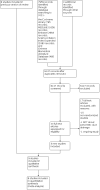
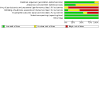
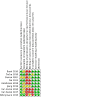
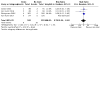
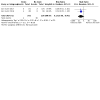
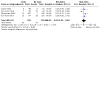
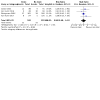



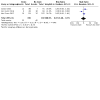

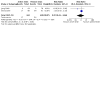
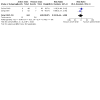

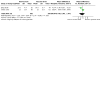






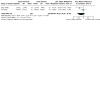
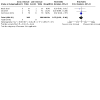
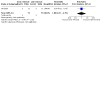
Update of
-
Prophylactic abdominal drainage for pancreatic surgery.Cochrane Database Syst Rev. 2018 Jun 21;6(6):CD010583. doi: 10.1002/14651858.CD010583.pub4. Cochrane Database Syst Rev. 2018. Update in: Cochrane Database Syst Rev. 2021 Dec 18;12:CD010583. doi: 10.1002/14651858.CD010583.pub5. PMID: 29928755 Free PMC article. Updated.
Similar articles
-
Prophylactic abdominal drainage for pancreatic surgery.Cochrane Database Syst Rev. 2025 May 16;5(5):CD010583. doi: 10.1002/14651858.CD010583.pub6. Cochrane Database Syst Rev. 2025. PMID: 40377137 Review.
-
Prophylactic abdominal drainage for pancreatic surgery.Cochrane Database Syst Rev. 2018 Jun 21;6(6):CD010583. doi: 10.1002/14651858.CD010583.pub4. Cochrane Database Syst Rev. 2018. Update in: Cochrane Database Syst Rev. 2021 Dec 18;12:CD010583. doi: 10.1002/14651858.CD010583.pub5. PMID: 29928755 Free PMC article. Updated.
-
Prophylactic abdominal drainage for pancreatic surgery.Cochrane Database Syst Rev. 2016 Oct 21;10(10):CD010583. doi: 10.1002/14651858.CD010583.pub3. Cochrane Database Syst Rev. 2016. Update in: Cochrane Database Syst Rev. 2018 Jun 21;6:CD010583. doi: 10.1002/14651858.CD010583.pub4. PMID: 27764898 Free PMC article. Updated.
-
Prophylactic abdominal drainage for pancreatic surgery.Cochrane Database Syst Rev. 2015 Aug 21;(8):CD010583. doi: 10.1002/14651858.CD010583.pub2. Cochrane Database Syst Rev. 2015. Update in: Cochrane Database Syst Rev. 2016 Oct 21;10:CD010583. doi: 10.1002/14651858.CD010583.pub3. PMID: 26292656 Updated.
-
Abdominal drainage to prevent intra-peritoneal abscess after appendectomy for complicated appendicitis.Cochrane Database Syst Rev. 2021 Aug 17;8(8):CD010168. doi: 10.1002/14651858.CD010168.pub4. Cochrane Database Syst Rev. 2021. Update in: Cochrane Database Syst Rev. 2025 Apr 11;4:CD010168. doi: 10.1002/14651858.CD010168.pub5. PMID: 34402522 Free PMC article. Updated.
Cited by
-
Prophylactic abdominal drainage for pancreatic surgery.Cochrane Database Syst Rev. 2025 May 16;5(5):CD010583. doi: 10.1002/14651858.CD010583.pub6. Cochrane Database Syst Rev. 2025. PMID: 40377137 Review.
-
Prophylactic drainage versus non-drainage following gastric cancer surgery: a meta-analysis of randomized controlled trials and observational studies.World J Surg Oncol. 2023 Jun 3;21(1):166. doi: 10.1186/s12957-023-03054-1. World J Surg Oncol. 2023. PMID: 37270519 Free PMC article.
-
Prophylactic Intra-abdominal Drains in Major Elective Surgeries: A Comprehensive Review.Cureus. 2024 Feb 12;16(2):e54056. doi: 10.7759/cureus.54056. eCollection 2024 Feb. Cureus. 2024. PMID: 38481916 Free PMC article. Review.
-
Antimicrobial Challenge in Acute Care Surgery.Antibiotics (Basel). 2022 Sep 27;11(10):1315. doi: 10.3390/antibiotics11101315. Antibiotics (Basel). 2022. PMID: 36289973 Free PMC article. Review.
-
Abdominal drainage after minimally invasive distal pancreatectomy: out of sight, out of mind?Surg Endosc. 2024 Nov;38(11):6396-6405. doi: 10.1007/s00464-024-11217-8. Epub 2024 Sep 1. Surg Endosc. 2024. PMID: 39218834
References
References to studies included in this review
Bassi 2010 {published data only}
-
- Bassi C, Molinari E, Malleo G, Crippa S, Butturini G, Salvia R, et al. Early versus late drain removal after standard pancreatic resections: results of a prospective randomized trial. Annals of Surgery 2010;252(2):207-14. - PubMed
-
- NCT00931554. Randomized trial of early versus standard drainage removal after pancreatic resections [Early versus standard drainage removal after pancreatic resections: results of a prospective randomized clinical trial]. clinicaltrials.gov/ct2/show/NCT00931554 (first received 2 July 2009).
Čečka 2018 {published data only}
-
- Čečka F, Jon B, Skalický P, Čermáková E, Neoral Č, Loveček M. Results of a randomized controlled trial comparing closed-suction drains versus passive gravity drains after pancreatic resection. Surgery 2018;164(5):1057-63. - PubMed
-
- NCT01988519. Randomized controlled trial comparing closed-suction drain versus passive gravity drain following pancreatic resection (DRAPA) [Results of a randomized controlled trial comparing closed-suction drains versus passive gravity drains after pancreatic resection]. clinicaltrials.gov/ct2/show/NCT01988519 (first received 20 November 2013).
Conlon 2001 {published data only}
Dai 2020 {published data only}
-
- Dai M, Liu Q, Xing C, Kleeff J, Liao Q, Guo J, et al. Early drain removal after major pancreatectomy reduces postoperative complications: a single-center, randomized, controlled trial. Journal of Pancreatology 2020;3(2):93-100.
-
- NCT02230436. Early versus late drain removal after pancreatectomy: a randomized prospective trial [Early drain removal after major pancreatectomy reduces postoperative complications: a single-center, randomized, controlled trial]. clinicaltrials.gov/ct2/show/NCT02230436 (first received 3 September 2014).
Dembinski 2019 {published data only}
-
- Dembinski J, Mariette C, Tuech JJ, Mauvais F, Piessen G, Fuks D, et al. Early removal of intraperitoneal drainage after pancreatoduodenectomy in patients without postoperative fistula at POD3: results of a randomized clinical trial. Journal of Visceral Surgery 2019;156(2):103-12. - PubMed
-
- NCT01368094. Early (4 days) versus standard drainage of the abdominal cavity after pancreaticoduodenectomy [Early removal of intraperitoneal drainage after pancreatoduodenectomy in patients without postoperative fistula at POD3: results of a randomized clinical trial]. clinicaltrials.gov/ct2/show/NCT01368094 (first received 7 June 2011).
Jiang 2016 {published data only}
-
- Jiang H, Liu N, Zhang M, Lu L, Dou R, Qu L. A randomized trial on the efficacy of prophylactic active drainage in prevention of complications after pancreaticoduodenectomy. Scandinavian Journal of Surgery 2016;105:215-22. - PubMed
Van Buren 2014 {published data only}
-
- McMillan MT, Fisher WE, Van Buren G, McElhany A, Bloomston M, Hughes SJ, et al. The value of drains as a fistula mitigation strategy for pancreatoduodenectomy: something for everyone? Results of a randomized prospective multi-institutional study. Journal of Gastrointestinal Surgery 2015;19(1):21-30. - PubMed
-
- McMillan MT, Malleo G, Bassi C, Butturini G, Salvia R, Roses RE, et al. Drain management after pancreatoduodenectomy: reappraisal of a prospective randomized trial using risk stratification. Journal of the American College of Surgeons 2015;221(4):798-809. - PubMed
-
- NCT01441492. Pancreas resection with and without drains [A randomized prospective multicenter trial of pancreaticoduodenectomy with and without routine intraperitoneal drainage]. clinicaltrials.gov/ct2/show/NCT01441492 (first received 27 September 2011).
-
- Van Buren G 2nd, Bloomston M, Hughes SJ, Winter J, Behrman SW, Zyromski NJ, et al. A randomized prospective multicenter trial of pancreaticoduodenectomy with and without routine intraperitoneal drainage. Annals of Surgery 2014;259(4):605-12. - PubMed
Van Buren 2017 {published data only}
-
- NCT01441492. Pancreas resection with and without drains [A randomized prospective multicenter trial of pancreas resection with and without routine intraperitoneal drainage]. clinicaltrials.gov/ct2/show/NCT01441492 (first received 27 September 2011).
-
- Van Buren G 2nd, Bloomston M, Schmidt CR, Behrman SW, Zyromski NJ, Ball CG, et al. A prospective randomized multicenter trial of distal pancreatectomy with and without routine intraperitoneal drainage. Annals of Surgery 2017;266(3):421-31. - PubMed
Witzigmann 2016 {published data only}
-
- ISRCTN04937707. Intra-abdominal drainage for two days versus no drainage following pancreas resection. isrctn.com/ISRCTN04937707 (first received 27 June 2007).
-
- Witzigmann H, Diener MK, Kienkötter S, Rossion I, Bruckner T, Werner B, et al. No need for routine drainage after pancreatic head resection: the dual-center, randomized, controlled PANDRA trial. Annals of Surgery 2016;264(3):528-37. - PubMed
References to studies excluded from this review
Adham 2013 {published data only}
-
- Adham M, Chopin-Laly X, Lepilliez V, Gincul R, Valette PJ, Ponchon T. Pancreatic resection: drain or no drain? Surgery 2013;154(5):1069-77. - PubMed
Behrman 2015 {published data only}
Correa‐Gallego 2013 {published data only}
Fisher 2011 {published data only}
Giovinazzo 2011 {published data only}
-
- Giovinazzo F, Butturini G, Salvia R, Mascetta G, Monsellato D, Marchegiani G, et al. Drain management after pancreatic resection: state of the art. Journal of Hepato-biliary-pancreatic Sciences 2011;18(6):779-84. - PubMed
Heslin 1998 {published data only}
-
- Heslin MJ, Harrison LE, Brooks AD, Hochwald SN, Coit DG, Brennan MF. Is intra-abdominal drainage necessary after pancreaticoduodenectomy? Journal of Gastrointestinal Surgery 1998;2(4):373-8. - PubMed
Jeekel 1992 {published data only}
-
- Jeekel J. No abdominal drainage after Whipple's procedure. British Journal of Surgery 1992;79(2):182. - PubMed
Kawai 2006 {published data only}
Kawaida 2021 {published data only}
-
- Kawaida H, Kono H, Amemiya H, Hosomura N, Higuchi Y, Nakayama T, et al. Early drain removal regardless of drain fluid amylase level might reduce risk of postoperative pancreatic fistula. Anticancer Research 2021;41(1):403-8. - PubMed
Kunstman 2017 {published data only}
-
- Kunstman JW, Starker LF, Healy JM, Salem RR. Pancreaticoduodenectomy can be performed safely with rare employment of surgical drains. American Surgeon 2017;83(3):265-73. - PubMed
Lee 2009 {published data only}
-
- Lee SE, Ahn YJ, Jang JY, Kim SW. Prospective randomized pilot trial comparing closed suction drainage and gravity drainage of the pancreatic duct in pancreaticojejunostomy. Journal of Hepato-biliary-pancreatic Surgery 2009;16(6):837-43. - PubMed
Lemke 2021 {published data only}
-
- Lemke M, Park L, Balaa FK, Martel G, Khalil JA, Bertens KA. Passive versus active intra-abdominal drainage following pancreaticoduodenectomy: a retrospective study using the American College of Surgeons NSQIP database. World Journal of Surgery 2021;45(2):554-61. - PubMed
Lim 2013 {published data only}
-
- Lim C, Dokmak S, Cauchy F, Aussilhou B, Belghiti J, Sauvanet A. Selective policy of no drain after pancreaticoduodenectomy is a valid option in patients at low risk of pancreatic fistula: a case-control analysis. World Journal of Surgery 2013;37(5):1021-7. - PubMed
Mehta 2013 {published data only}
-
- Mehta VV, Fisher SB, Maithel SK, Sarmiento JM, Staley CA, Kooby DA. Is it time to abandon routine operative drain use? A single institution assessment of 709 consecutive pancreaticoduodenectomies. Journal of the American College of Surgeons 2013;216(4):635-42. - PubMed
Paulus 2012 {published data only}
-
- Paulus EM, Zarzaur BL, Behrman SW. Routine peritoneal drainage of the surgical bed after elective distal pancreatectomy: is it necessary? American Journal of Surgery 2012;204(4):422-7. - PubMed
Zaghal 2020 {published data only}
-
- Zaghal A, Tamim H, Habib S, Jaafar R, Mukherji D, Khalife M. Drain or no drain following pancreaticoduodenectomy: the unsolved dilemma. Scandinavian Journal of Surgery 2020;109(3):228-37. - PubMed
References to ongoing studies
Additional references
Allen 2011
Andrén‐Sandberg 2011
Bassi 2017
-
- Bassi C, Marchegiani G, Dervenis C, Sarr M, Abu Hilal M, Adham M. The 2016 update of the International Study Group (ISGPS) definition and grading of postoperative pancreatic fistula: 11 years after. Surgery 2017;161(3):584-91. - PubMed
Bornman 2001
Braganza 2011
-
- Braganza JM, Lee SH, McCloy RF, McMahon MJ. Chronic pancreatitis. Lancet 2011;377(9772):1184-97. - PubMed
Bray 2018
-
- Bray F, Ferlay J, Soerjomataram I, Siegel RL, Torre LA, Jemal A. Global cancer statistics 2018: GLOBOCAN estimates of incidence and mortality worldwide for 36 cancers in 185 countries. CA: A Cancer Journal for Clinicians 2018;68(6):394-424. - PubMed
Cameron‐Strange 1985
-
- Cameron-Strange A, Horner J. Haemorrhage following insertion of continuous suction drains at appendectomy. Journal of the Royal College of Surgeons of Edinburgh 1985;30(4):271-2. - PubMed
Charoenkwan 2017
-
- Charoenkwan K, Kietpeerakool C. Retroperitoneal drainage versus no drainage after pelvic lymphadenectomy for the prevention of lymphocyst formation in women with gynaecological malignancies. Cochrane Database of Systematic Reviews 2017, Issue 6. Art. No: CD007387. [DOI: 10.1002/14651858.CD007387.pub4] - DOI - PMC - PubMed
Cheng 2017
-
- Cheng Y, Briarava M, Lai M, Wang X, Tu B, Cheng N, et al. Pancreaticojejunostomy versus pancreaticogastrostomy reconstruction for the prevention of postoperative pancreatic fistula following pancreaticoduodenectomy. Cochrane Database of Systematic Reviews 2017, Issue 9. Art. No: CD012257. [DOI: 10.1002/14651858.CD012257.pub2] - DOI - PMC - PubMed
Cheng 2019
-
- Cheng Y, He S, Xia J, Ding X, Liu Z, Gong J. Duct-to-mucosa pancreaticojejunostomy for the prevention of postoperative pancreatic fistula following pancreaticoduodenectomy. Cochrane Database of Systematic Reviews 2019, Issue 10. Art. No: CD013462. [DOI: 10.1002/14651858.CD013462] - DOI - PMC - PubMed
Clavien 2009
-
- Clavien PA, Barkun J, Oliveira ML, Vauthey JN, Dindo D, Schulick RD, et al. The Clavien-Dindo classification of surgical complications: five-year experience. Annals of Surgery 2009;250(2):187-96. - PubMed
Deng 2020
Diener 2011
-
- Diener MK, Tadjalli-Mehr K, Wente MN, Kieser M, Büchler MW, Seiler CM. Risk-benefit assessment of closed intra-abdominal drains after pancreatic surgery: a systematic review and meta-analysis assessing the current state of evidence. Langenbeck's Archives of Surgery 2011;396(1):41-52. - PubMed
Dindo 2004
Dragovich 2020
-
- Dragovich T, Erickson RA, Larson CR, Shabahang M. Pancreatic cancer, 2020. emedicine.medscape.com/article/280605-overview (accessed 30 January 2021).
Durai 2009
-
- Durai R, Mownah A, Ng PC. Use of drains in surgery: a review. Journal of Perioperative Practice 2009;19(6):180-6. - PubMed
Ferlay 2019
-
- Ferlay J, Colombet M, Soerjomataram I, Mathers C, Parkin DM, Piñeros M, et al. Estimating the global cancer incidence and mortality in 2018: GLOBOCAN sources and methods. International Journal of Cancer 2019;144(8):1941-53. - PubMed
Fisher 2018
-
- Fisher WE. Intraperitoneal drainage and pancreatic resection. Advances in Surgery 2018;52(1):205-22. - PubMed
Gachabayov 2019
-
- Gachabayov M, Gogna S, Latifi R, Dong XD. Passive drainage to gravity and closed-suction drainage following pancreatoduodenectomy lead to similar grade B and C postoperative pancreatic fistula rates. A meta-analysis. International Journal of Surgery 2019;67(2019):24-31. - PubMed
Garg 2004
-
- Garg PK, Tandon RK. Survey on chronic pancreatitis in the Asia-Pacific region. Journal of Gastroenterology and Hepatology 2004;19(9):998-1004. - PubMed
Gates 2013
GRADEpro GDT [Computer program]
-
- GRADEpro GDT: GRADEpro Guideline Development Tool. McMaster University and Evidence Prime, 2021. Available from www.gradepro.org.
Gupte 2018
-
- Gupte A, Goede D, Tuite R, Forsmark CE. Chronic pancreatitis. BMJ 2018;361:k2126. - PubMed
Gurusamy 2007a
Gurusamy 2007b
Gurusamy 2013a
Gurusamy 2013b
Hackert 2011
-
- Hackert T, Werner J, Buchler MW. Postoperative pancreatic fistula. Surgeon 2011;9(4):211-7. - PubMed
Halloran 2002
-
- Halloran CM, Ghaneh P, Bosonnet L, Hartley MN, Sutton R, Neoptolemos JP. Complications of pancreatic cancer resection. Digestive Surgery 2002;19(2):138-46. - PubMed
Henkus 1999
-
- Henkus HE. Complications of high-vacuum suction drainage. European Journal of Surgery 1999;165(8):813-4. - PubMed
Higgins 2003
Higgins 2017
-
- Higgins JP, Altman DG, Sterne JA, editor(s). Chapter 8: Assessing risk of bias in included studies. In: Higgins JP, Churchill R, Chandler J, Cumpston MS, editor(s), Cochrane Handbook for Systematic Reviews of Interventions Version 5.2.0 (updated June 2017), Cochrane, 2017. Available from www.training.cochrane.org/handbook/PDF/v5.2/chapter-08.
Higgins 2021
-
- Higgins JPT, Thomas J, Chandler J, Cumpston M, Li T, Page MJ, et al, editor(s). Cochrane Handbook for Systematic Reviews of Interventions Version 6.2 (updated February 2021). Cochrane, 2021. Available from www.training.cochrane.org/handbook.
Hüttner 2017
-
- Hüttner FJ, Probst P, Knebel P, Strobel O, Hackert T, Ulrich A, et al. Meta-analysis of prophylactic abdominal drainage in pancreatic surgery. British Journal of Surgery 2017;104(6):660-8. - PubMed
Inoue 2011
-
- Inoue M, Uchida K, Otake K, Koike Y, Okugawa Y, Kobayashi M, et al. Placement of prophylactic drains after laparotomy may increase infectious complications in neonates. Pediatric Surgery International 2011;27(9):975-9. - PubMed
ISRCTN04937707
-
- ISRCTN04937707. Intra-abdominal drainage for two days versus no drainage following pancreas resection. isrctn.com/ISRCTN04937707 (first received 27 June 2007).
Kamisawa 2016
-
- Kamisawa T, Wood LD, Itoi T, Takaori K. Pancreatic cancer. Lancet 2016;388(10039):73-85. - PubMed
Kleeff 2017
-
- Kleeff J, Whitcomb DC, Shimosegawa T, Esposito I, Lerch MM, Gress T. Chronic pancreatitis. Nature Reviews Disease Primers 2017;3:17060. - PubMed
Lew 2017
Li 2018
Lyu 2020
-
- Lyu Y, Cheng Y, Wang B, Zhao S, Chen L. Peritoneal drainage or no drainage after pancreaticoduodenectomy and/or distal pancreatectomy: a meta-analysis and systematic review. Surgical Endoscopy 2020;34(11):4991-5005. - PubMed
Machicado 2017
Maisonneuve 2019
-
- Maisonneuve P. Epidemiology and burden of pancreatic cancer. Presse Medicale 2019;48(3 Pt 2):e113-23. - PubMed
Makama 2010
-
- Makama JG, Ahmed A, Ukwenya Y, Mohammed I. Drain site hernia in an adult: a case report. West African Journal of Medicine 2010;29(6):429-31. - PubMed
Memon 2001
-
- Memon MA, Memon MI, Donohue JH. Abdominal drains: a brief historical review. Irish Medical Journal 2001;94(6):164-6. - PubMed
Moher 2009
NCT00931554
-
- NCT00931554. Randomized trial of early versus standard drainage removal after pancreatic resections [Early versus standard drainage removal after pancreatic resections: results of a prospective randomized clinical trial]. clinicaltrials.gov/ct2/show/NCT00931554 (first received 2 July 2009).
NCT01368094
-
- NCT01368094. Early (4 days) versus standard drainage of the abdominal cavity after pancreaticoduodenectomy [Early removal of intraperitoneal drainage after pancreatoduodenectomy in patients without postoperative fistula at POD3: results of a randomized clinical trial]. clinicaltrials.gov/ct2/show/NCT01368094 (first received 7 June 2011).
NCT01441492
-
- NCT01441492. Pancreas resection with and without drains [A randomized prospective multicenter trial of pancreas resection with and without routine intraperitoneal drainage]. clinicaltrials.gov/ct2/show/NCT01441492 (first received 27 September 2011).
NCT01988519
-
- NCT01988519. Randomized controlled trial comparing closed-suction drain versus passive gravity drain following pancreatic resection (DRAPA) [Results of a randomized controlled trial comparing closed-suction drains versus passive gravity drains after pancreatic resection.]. clinicaltrials.gov/ct2/show/NCT01988519 (first received 20 November 2013).
NCT02230436
-
- NCT02230436. Early versus late drain removal after pancreatectomy: a randomized prospective trial [Early drain removal after major pancreatectomy reduces postoperative complications: a single-center, randomized, controlled trial]. clinicaltrials.gov/ct2/show/NCT02230436 (first received 3 September 2014).
Nomura 1998
-
- Nomura T, Shirai Y, Okamoto H, Hatakeyama K. Bowel perforation caused by silicone drains: a report of two cases. Surgery Today 1998;28(9):940-2. - PubMed
Parker 2007
Reed 1992
-
- Reed MW, Wyman A, Thomas WE, Zeiderman MR. Perforation of the bowel by suction drains. British Journal of Surgery 1992;79(7):679. - PubMed
Reeves 2021
-
- Reeves BC, Deeks JJ, Higgins JPT, Shea B, Tugwell P, Wells GA. Chapter 24: Including non-randomized studies on intervention effects. In: Higgins JPT, Thomas J, Chandler J, Cumpston M, Li T, Page MJ, et al, editor(s). Cochrane Handbook for Systematic Reviews of Interventions Version 6.2 (updated February 2021). Cochrane, 2021. Available from www.training.cochrane.org/handbook.
Review Manager 2020 [Computer program]
-
- Review Manager 5 (RevMan 5). Version 5.4. The Cochrane Collaboration, 2020.
Rolph 2004
-
- Rolph R, Duffy JMN, Alagaratnam S, Ng P, Novell R. Intra-abdominal drains for the prophylaxis of anastomotic leak in elective colorectal surgery. Cochrane Database of Systematic Reviews 2004, Issue 4. Art. No: CD002100. [DOI: 10.1002/14651858.CD002100.pub2] - DOI
Sahu 2008
-
- Sahu SK, Bahl DV, Husain M, Sachan PK. Drain erosion into bowel: an unusual complication. The Internet Journal of Surgery 2007;16(2).
Samraj 2007
Schünemann 2021
-
- Schünemann HJ, Higgins JPT, Vist GE, Glasziou P, Akl EA, Skoetz N, et al. Chapter 14: Completing ‘Summary of findings’ tables and grading the certainty of the evidence. In: Higgins JPT, Thomas J, Chandler J, Cumpston M, Li T, Page MJ, et al, editor(s). Cochrane Handbook for Systematic Reviews of Interventions Version 6.2 (updated February 2021). Cochrane, 2021. Available from www.training.cochrane.org/handbook.
Siegel 2019
-
- Siegel RL, Miller KD, Jemal A. Cancer statistics, 2019. CA: A Cancer Journal for Clinicians 2019;69(1):7-34. - PubMed
Singh 2019
-
- Singh VK, Yadav D, Garg PK. Diagnosis and management of chronic pancreatitis: a review. JAMA 2019;322(24):2422-34. - PubMed
Srivastava 2007
-
- Srivastava P, Srivastava S, Sahu M. Iatrogenic bowel perforation secondary to surgical drain after cholecystectomy: a case report with review of literature. Internet Journal of Surgery 2007;13(1).
Van der Wilt 2013
-
- Van der Wilt AA, Coolsen MM, De Hingh IH, Van der Wilt GJ, Groenewoud H, Dejong CH, et al. To drain or not to drain: a cumulative meta-analysis of the use of routine abdominal drains after pancreatic resection. HPB: the Official Journal of the International Hepato Pancreato Biliary Association 2013;15(5):337-44. - PMC - PubMed
Van Hee 1983
-
- Van Hee R. Complications of drainage. Acta Chirurgica Belgica 1983;83(5):340-4. - PubMed
Wang 2015
Wente 2007a
-
- Wente MN, Veit JA, Bassi C, Dervenis C, Fingerhut A, Gouma DJ, et al. Postpancreatectomy hemorrhage (PPH): an International Study Group of Pancreatic Surgery (ISGPS) definition. Surgery 2007;142(1):20-5. - PubMed
Wente 2007b
-
- Wente MN, Bassi C, Dervenis C, Fingerhut A, Gouma DJ, Izbicki JR, et al. Delayed gastric emptying (DGE) after pancreatic surgery: a suggested definition by the International Study Group of Pancreatic Surgery (ISGPS). Surgery 2007;142(5):761-8. - PubMed
Yadav 2011
-
- Yadav D, Timmons L, Benson JT, Dierkhising RA, Chari ST. Incidence, prevalence, and survival of chronic pancreatitis: a population-based study. American Journal of Gastroenterology 2011;106(12):2192-9. - PubMed
References to other published versions of this review
Cheng 2013
-
- Cheng Y, Yang C, Lin Y, Lu J, Wu S, Zhou R, et al. Prophylactic abdominal drainage for pancreatic surgery. Cochrane Database of Systematic Reviews 2013, Issue 6. Art. No: CD010583. [DOI: 10.1002/14651858.CD010583] - DOI
Cheng 2016
Peng 2015
Publication types
MeSH terms
LinkOut - more resources
Full Text Sources

